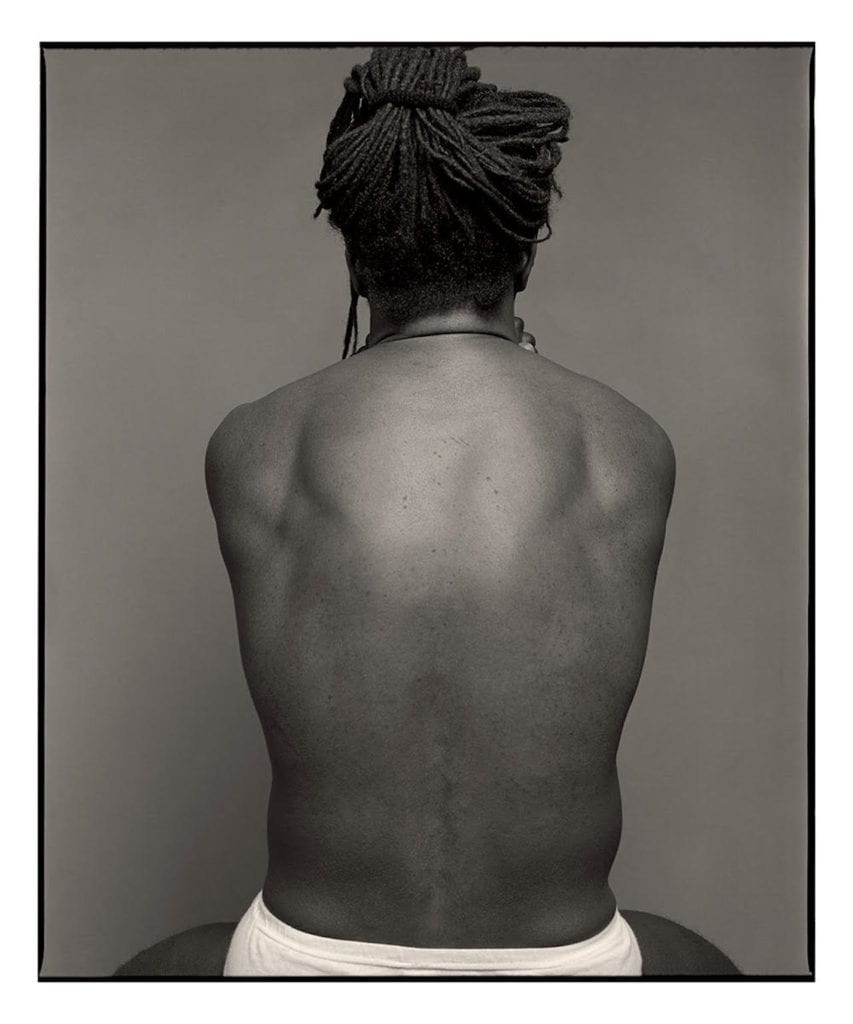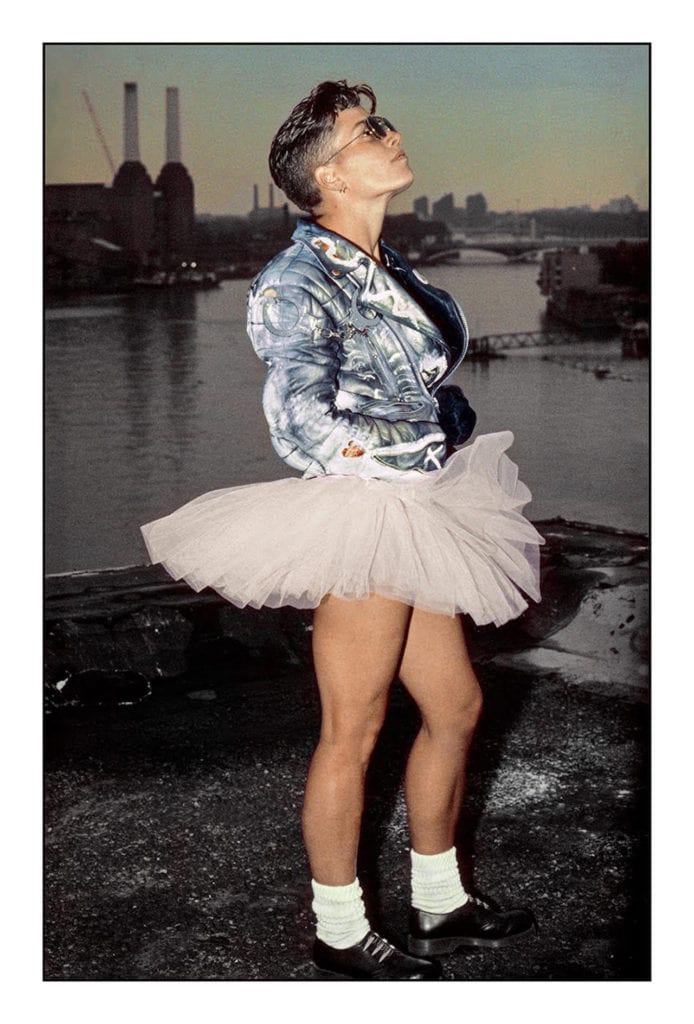Born and raised in California, Volcano moved to the UK in the early 1980s, later producing the book, Love Bites, collaborating with partygoers at “queer dyke sex-performance club”, Chain Reaction. Even the gay press shunned it.
Now living in Sweden, a ‘MaPa’ to two children, the artist’s photographs are on show as part of Kiss My Genders at the Hayward Gallery in London, from 12 June to 08 September.
–
I was born making trouble. Not just gender trouble, but all kinds. I was five when the cops first brought me home, picked up for selling red rocks from Mars to the local human inhabitants.
My queer life really began in San Francisco. I lived in the Goodman Building, a famous artist hotel, in the very same studio Janis Joplin had shared with her Jewish lesbian lover!
I was a motorbike escort at Green Street Mortuary. In 1980, punk rock star Olga deVolga and I could make up to $200 escorting Chinese funerals, complete with flower cars and marching bands, around the city, ending at the cemeteries. Tips were given in little red envelopes.
The late 1980s and 90s were amazing times. It felt especially important to be visible in the UK. There was Section 28, the Aids epidemic, and Nelson Mandela was set free. Performing our pleasure with each other, our bodies, our genders, daily life – not just for a weekend Pride party – has always been my modus operandi.
Being queer back then meant being in-your-face, out, loud, proud, unapologetic. We would scale tall buildings [and make photographs on the rooftops]. We saw ourselves as shockingly sexy and subversive superheroes.

My take-away from the furore around Love Bites was that sex, or the promise of it, does sell. It didn’t make me money, but it got my work noticed, which had ups and downs.
I got pigeonholed as a ‘sex photographer’. And I am sure some doors closed because of that. But many others opened, for both myself, and in the hearts and minds of lonely queers around the world, seeing those photographs and knowing it was possible to live outside heteronormative conventions.
I entered a drag king contest. I let the beard I’d been hiding my entire life grow, hoping it would give me an ‘edge’. It didn’t. I lost. My performance of a kind of non-binary, hybrid masculinity, glitter leather queen did not impress the judges. But literally on stage with the other contestants, the drag king movement in London was born. Along with the beginnings of The Drag King Book, made with one of the judges, Jack Halberstam, who gave me the lowest score!
My greatest role has been as a parent. A ‘MaPa’ for two young creatures. I get to see firsthand how a human’s social identity is formed and nurtured.
It didn’t used to matter so much. But after years of telling people I didn’t care if they called me he or she, I discovered that I do. Both my partner of 13 years and our two kids, four and seven, also identify as non-binary, but our pronouns are deliberately all over the place.

My work is driven by a need to make visible what has been forced to remain hidden. When I helped my cousin discover her intersex variation, my father didn’t speak to me for nearly 20 years. They decided it was better for her to think she had cancer.
The cultural capital the non-binary movement achieved in such short time is amazing. And irritating for someone like me who’s been out as non-binary, genderqueer and intersex since 1995. If only issues affecting people with intersex variations got half as much attention! If only racial injustice and income inequality were as sexy as a pretty, young, skinny, white girl celeb suddenly declaring they share an oppressed status with other non-binary genderqueer people.
Photography is both messy and precise. Intrinsically experimental and unpredictable. My first love. It’s also tangible and chemical. It has a smell and a flavour. And with proper care, it can last far longer than our corporeal bodies.
My work wobbles on the line between fantasy and non-fiction. I am creating a document of reality, but also something that transforms the candid camera into a more conscious camera. Consent and collaboration are the key elements of what I call my queer feminist methodology.
How would I like to be remembered? Truth or dare? The truth is that I would like to be remembered as a cliché, as ‘someone who made a difference’. The dare? Still too dangerous for me to reveal!
This article was originally published in the issue #7885 of British Journal of Photography magazine. Visit the BJP Shop to purchase the magazine here.
